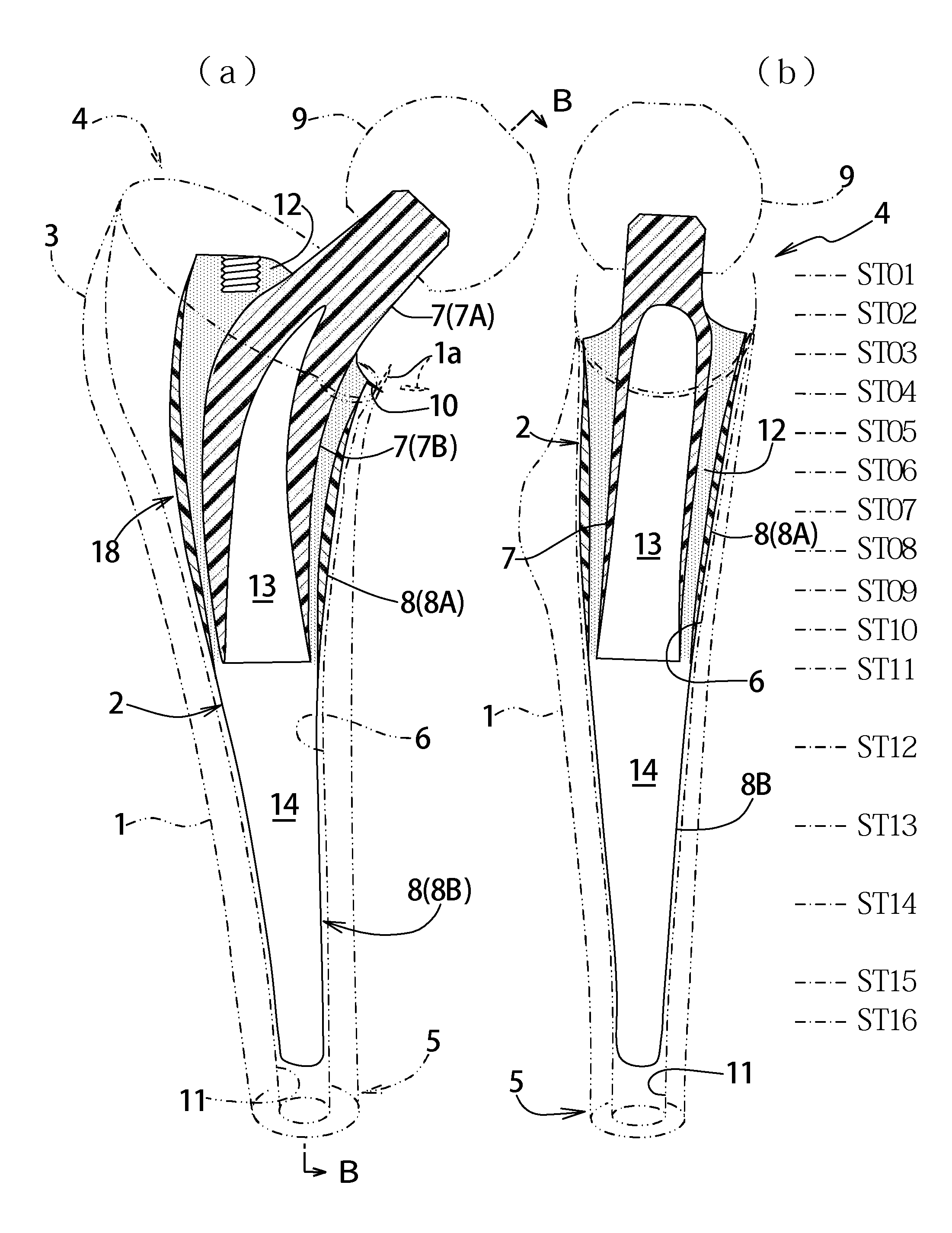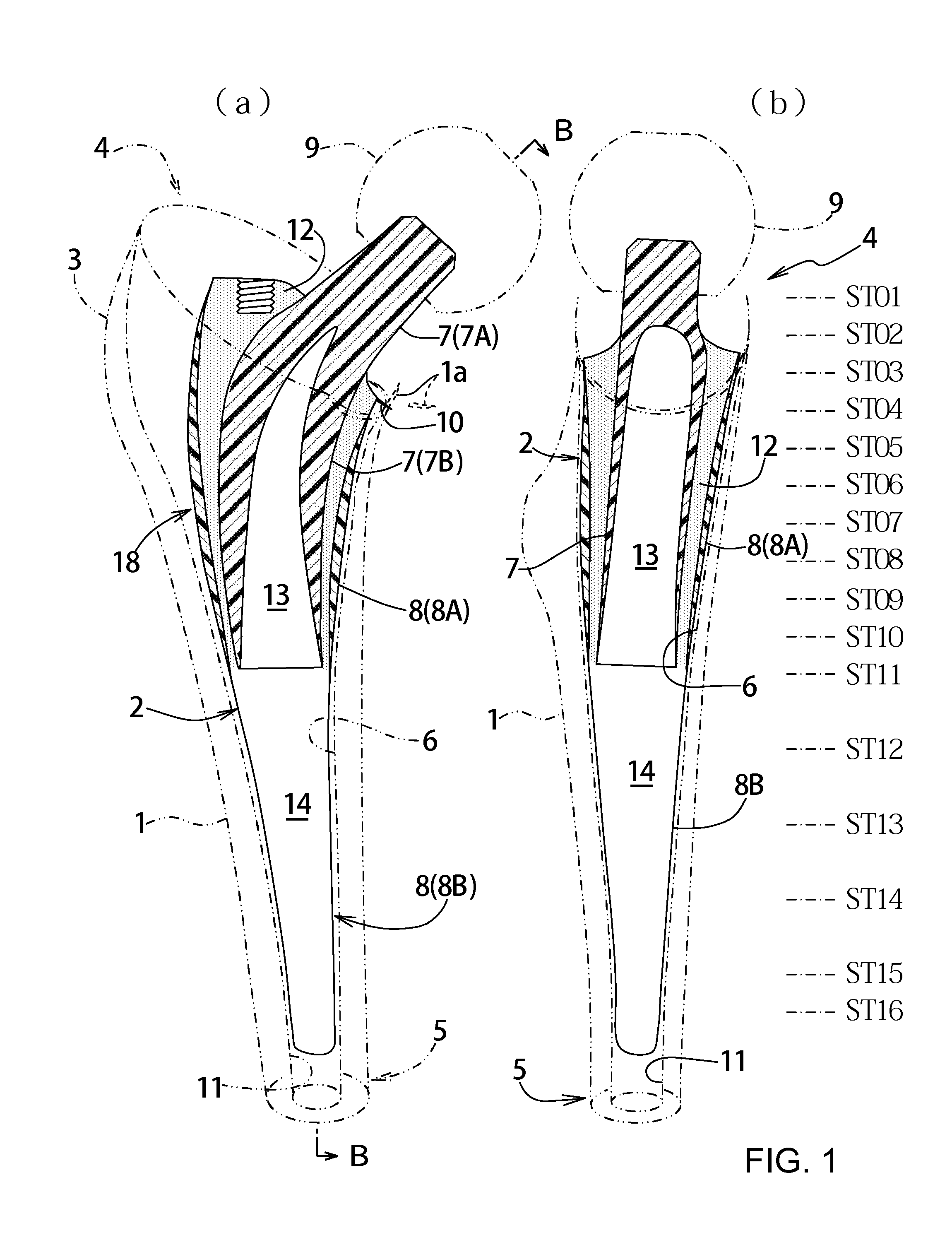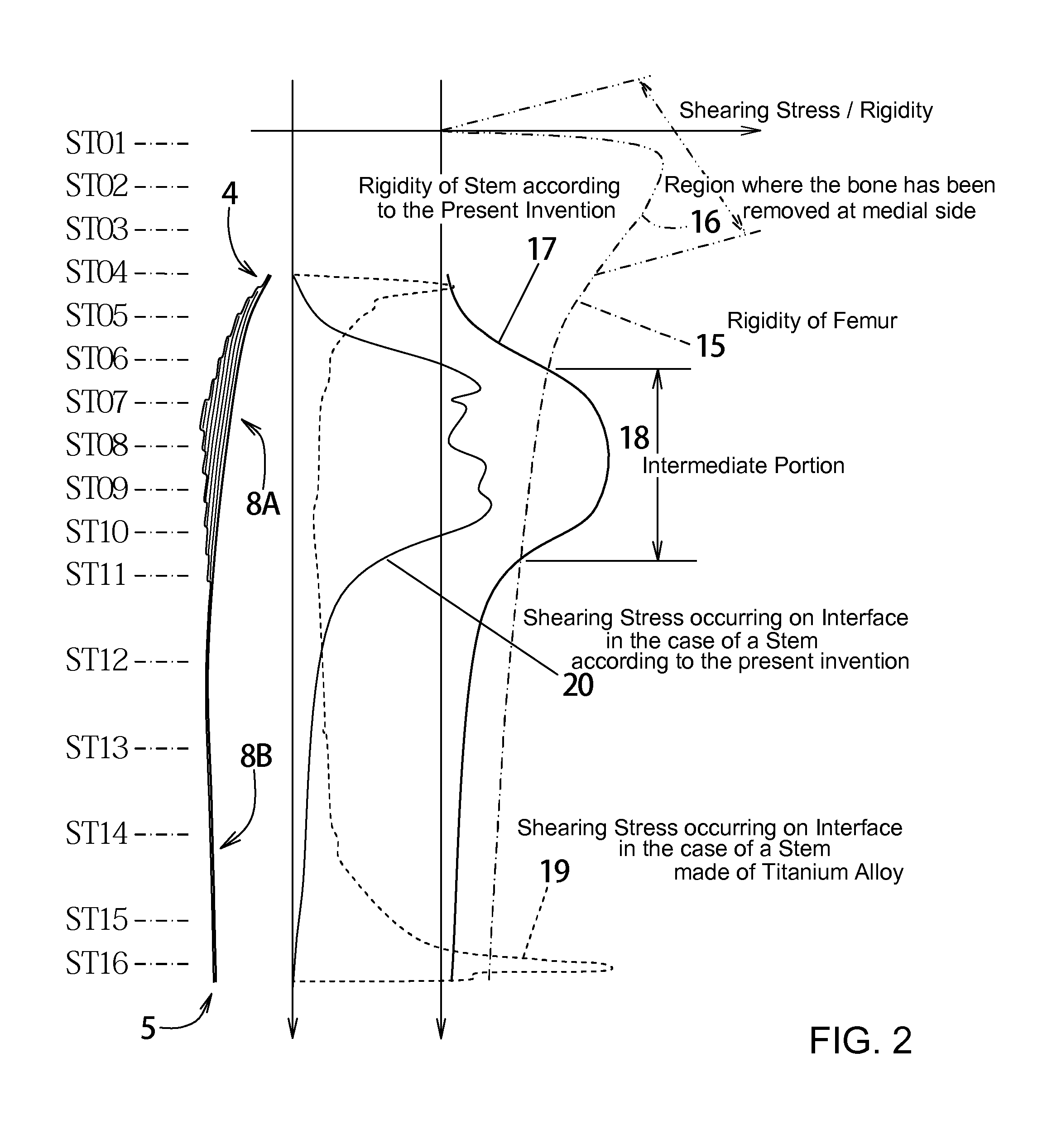Artificial cementless hip prosthesis stem
a hip prosthesis and cementless technology, applied in the field of artificial cementless hip prosthesis stems, can solve the problems of high possibility of suffering from pulmonary embolism, high damage to bone and/or sharp pain of patients, etc., and achieve the effect of lowering the price of the stem, reducing the working load during the making process of the stem, and reducing the risk of pulmonary embolism
- Summary
- Abstract
- Description
- Claims
- Application Information
AI Technical Summary
Problems solved by technology
Method used
Image
Examples
Embodiment Construction
[0076]Referring to the drawings of the embodiments, an artificial cement-less hip prosthesis stem according to the present invention is disclosed as follows; FIG. 1(a) is a sectional view in which a stem 2 is implanted into a femur 1, and (b) is a sectional view taken along lines B-B in (a), wherein the stem is implanted in a deep hollow 6 extending from the epiphysis 4 to the diaphysis 5 of the femur by excising some spongiosa and a part of medulla so as not to pass through a greater trochanter 3, gradually united with the femur 1 by Bone-Growth, enabling the artificial cement-less hip prosthesis stem to eliminate the interfacial separation.
[0077]The stem 2 mainly consists of an inner construct 7 and an outer construct 8, the former is provided with a neck 7A and an inner body 7B, the latter is provided with an outer body 8A and a leg 8B. The neck 7A is engaged with a spherical head 9 which works as a joint in cooperation with a socket, not shown, fixed to a pelvis, so as to transm...
PUM
| Property | Measurement | Unit |
|---|---|---|
| angle | aaaaa | aaaaa |
| shearing stress | aaaaa | aaaaa |
| angles | aaaaa | aaaaa |
Abstract
Description
Claims
Application Information
 Login to View More
Login to View More - R&D
- Intellectual Property
- Life Sciences
- Materials
- Tech Scout
- Unparalleled Data Quality
- Higher Quality Content
- 60% Fewer Hallucinations
Browse by: Latest US Patents, China's latest patents, Technical Efficacy Thesaurus, Application Domain, Technology Topic, Popular Technical Reports.
© 2025 PatSnap. All rights reserved.Legal|Privacy policy|Modern Slavery Act Transparency Statement|Sitemap|About US| Contact US: help@patsnap.com



